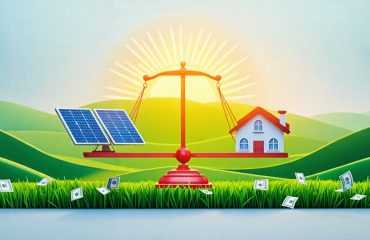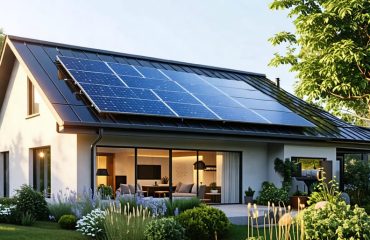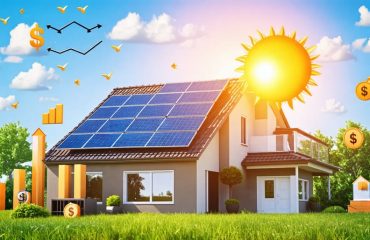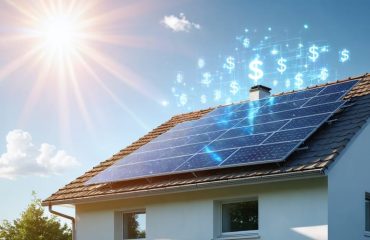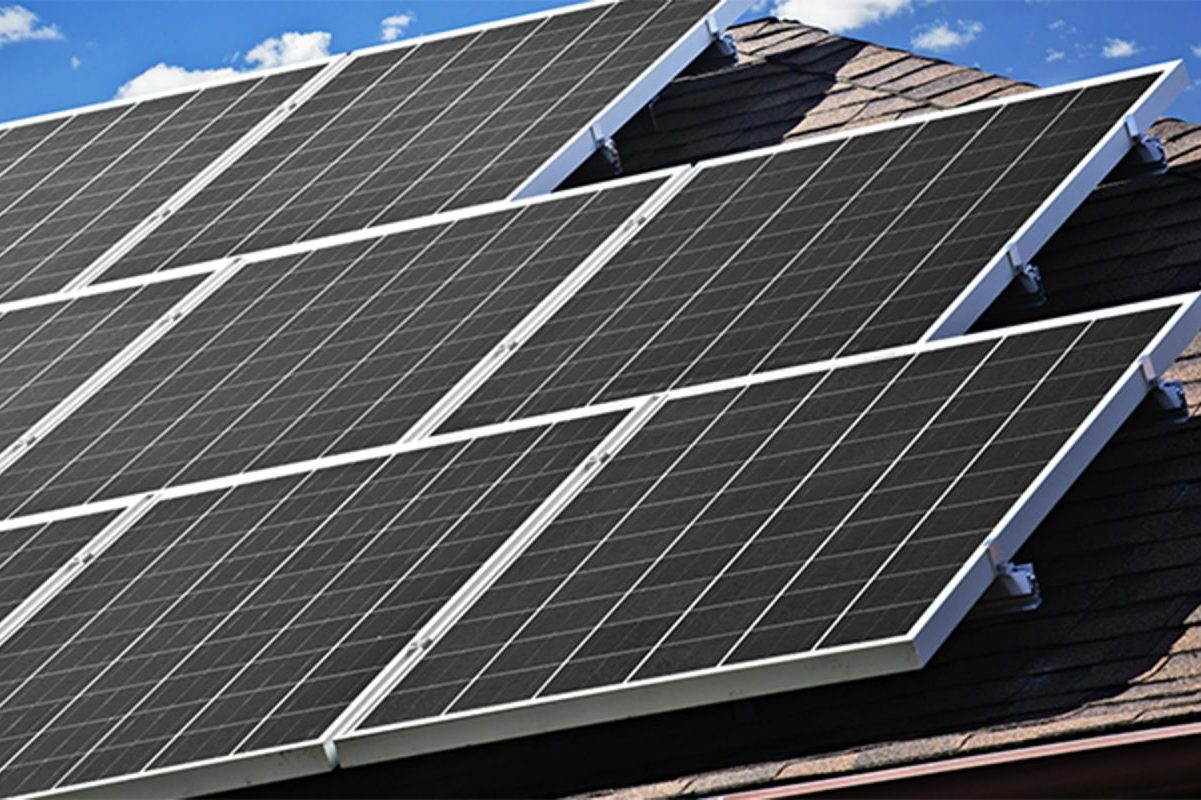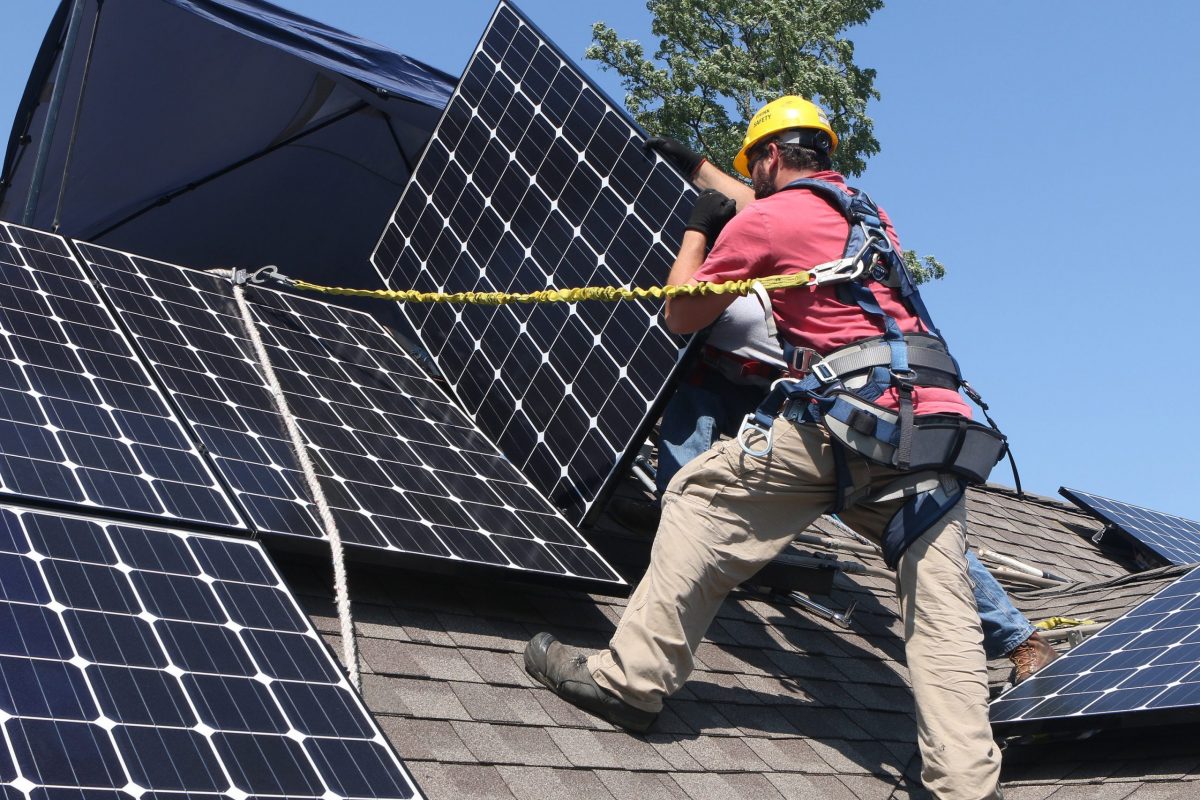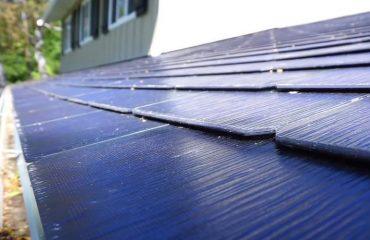Financing your green energy transition has never been more accessible or financially rewarding. Today’s innovative funding solutions are transforming how homeowners invest in sustainable energy, making solar power and other renewable technologies within reach for millions of Americans. From federal tax credits covering up to 30% of installation costs to specialized green mortgages and power purchase agreements (PPAs), the financial pathways to clean energy adoption have expanded dramatically.
Smart financing options now allow homeowners to start saving on energy bills immediately while contributing to environmental sustainability. Traditional barriers like high upfront costs have been replaced by flexible payment plans, zero-down options, and performance-based financing models that align with actual energy production. Local utilities, private lenders, and government programs have created a robust ecosystem of funding opportunities, making it possible to transition to renewable energy while potentially increasing your property’s value.
Whether you’re considering solar panels, wind energy, or other sustainable solutions, understanding these financing mechanisms is crucial for making an informed investment decision. Modern green energy financing isn’t just about funding installation—it’s about creating long-term value while accelerating the transition to a cleaner, more sustainable future.
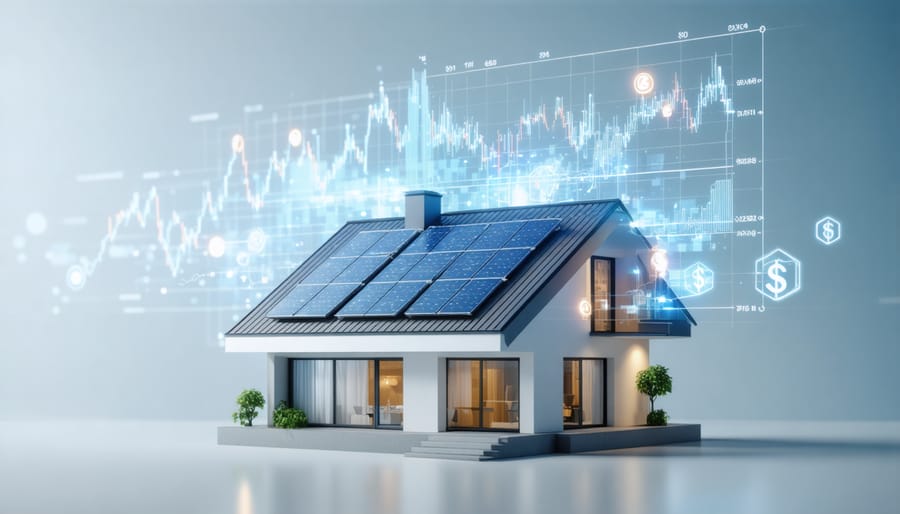
Modern Solar Financing Options Explained
Solar Loans vs. Traditional Home Improvement Loans
When considering solar panel financing, homeowners have two main options: specialized solar loans and traditional home improvement loans. Solar loans are specifically designed for renewable energy projects and often come with distinct advantages.
Solar loans typically offer longer repayment terms (usually 10-20 years) compared to traditional home improvement loans (5-7 years). This extended period helps keep monthly payments lower and more manageable. Additionally, solar-specific loans frequently feature lower interest rates and may require little to no down payment, making them more accessible to many homeowners.
Another key benefit of solar loans is that they’re structured to account for federal tax credits and local incentives. Many solar lenders allow you to re-amortize your loan after receiving your tax credit, reducing your monthly payments without penalty. Traditional home improvement loans don’t typically offer this flexibility.
However, traditional loans might be preferable in certain situations. If you already have substantial home equity, a home equity loan or HELOC might offer better rates due to being secured by your property. These loans also provide more flexibility in how you use the funds, allowing you to combine solar installation with other home improvements.
Consider your specific circumstances, including credit score, home equity, and desired payment terms, when choosing between these options. Both can be viable paths to financing your solar installation, but solar-specific loans often provide more tailored benefits for renewable energy projects.
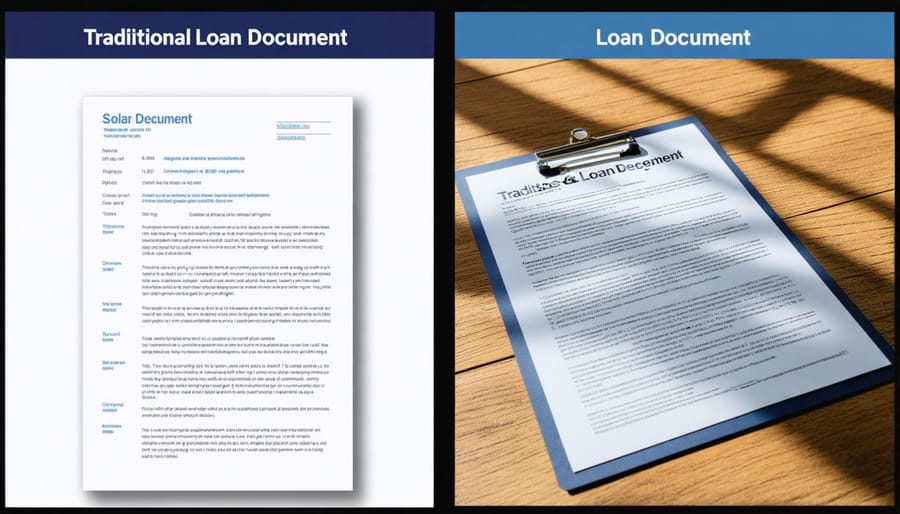
Power Purchase Agreements (PPAs) and Solar Leases
Power Purchase Agreements (PPAs) and solar leases represent attractive zero-down financing options for homeowners looking to embrace solar energy without significant upfront costs. These financing methods have revolutionized access to renewable energy by making it more affordable and accessible to the average homeowner.
With a PPA, you agree to purchase the power generated by solar panels installed on your property at a predetermined rate, typically lower than your current utility rates. The solar company owns, maintains, and operates the system, while you benefit from reduced electricity bills from day one.
Similarly, solar leases and purchase options allow you to rent the solar equipment for a fixed monthly payment. This arrangement includes system maintenance and repairs, providing peace of mind and predictable energy costs. Many leases include annual payment escalators, but these are usually designed to be lower than projected utility rate increases.
Both PPAs and leases typically include performance guarantees, ensuring your system produces the promised amount of electricity. If you’re looking to go solar with minimal initial investment, these options offer an excellent pathway to clean energy while potentially saving money from the first month. Most agreements run for 20-25 years, with options to buy the system, renew the agreement, or have the equipment removed at the end of the term.
Federal and State Solar Incentives in 2024
Federal Solar Tax Credit Updates
The federal solar Investment Tax Credit (ITC) remains one of the most significant solar tax incentives available to homeowners. As of 2024, the program offers a substantial 30% tax credit on the total cost of your solar installation, including equipment and installation fees. This rate is guaranteed through 2032, providing long-term stability for homeowners planning their solar investment.
To qualify for the federal solar tax credit, you must own your solar system (rather than lease it) and install it on your primary or secondary residence in the United States. The system must be new or being used for the first time, and you need to have sufficient tax liability to claim the credit. If your tax liability is less than the credit amount in the installation year, you can carry the remaining credit forward to subsequent tax years.
The credit applies to all solar system components, including:
– Solar panels
– Inverters
– Mounting equipment
– Battery storage systems (when charged exclusively by solar)
– Labor costs for installation
– Permit fees and inspection costs
For example, if your total solar installation costs $20,000, you could receive a $6,000 tax credit. This significant reduction in out-of-pocket expenses makes solar power more accessible than ever for American homeowners. Remember to keep all receipts and documentation related to your solar installation for tax purposes, and consider consulting with a tax professional to maximize your benefits.
State-Specific Solar Incentives
Beyond federal incentives, many states offer their own solar incentive programs that can significantly reduce your installation costs. California leads with generous rebates through the Self-Generation Incentive Program (SGIP) and net metering policies. New York residents can benefit from the NY-Sun initiative, which provides direct incentives based on system size and location. Massachusetts offers the SMART program, providing fixed-rate payments for solar generation over 20 years.
In New Jersey, the Transition Renewable Energy Certificate (TREC) program rewards solar system owners for the clean energy they produce. Florida, despite being the Sunshine State, focuses primarily on property tax exemptions and sales tax relief for solar installations. Texas varies by utility district, with Austin Energy and CPS Energy offering some of the most competitive rebate programs in the state.
These incentives can vary significantly by location and may change annually, so it’s essential to check current offerings in your area. Many states also provide property tax exemptions, meaning your home’s increased value from solar panels won’t result in higher property taxes. Some utilities offer additional rebates or performance-based incentives that stack with state programs.
To maximize your benefits, consider timing your solar installation when incentives are at their peak. Local solar installers typically stay current with available programs and can help you navigate the application process. Remember that while some incentives are immediate rebates, others might come as tax credits or ongoing performance payments, affecting your long-term financial planning.
Real Return on Investment
Energy Bill Savings Calculator
Understanding your potential energy savings is crucial when exploring green energy financing options. To make an informed decision, you’ll want to consider several key factors in your calculations.
Start by gathering your current electricity bills from the past 12 months to establish your baseline energy consumption and costs. Next, estimate your potential solar energy production based on your location, roof orientation, and available space for panels. Many online calculators can help with this, particularly when calculating solar panel ROI.
To determine your monthly savings, subtract your new estimated energy bill (if any) and monthly financing payment from your current average monthly bill. Don’t forget to factor in:
– Federal tax credits (currently 30% of system cost)
– State and local incentives
– Utility company rebates
– Potential income from solar renewable energy certificates (SRECs)
– Annual electricity rate increases (historically 2-3%)
For example, if your current monthly electricity bill is $200, and your solar loan payment would be $150 with negligible remaining electricity costs, you could save $50 monthly immediately. These savings typically increase over time as electricity rates rise while your loan payment remains fixed.
Remember that different financing options (cash purchase, solar loans, leases, or PPAs) will affect your savings calculations differently. Many solar providers offer free savings estimates tailored to your specific situation.
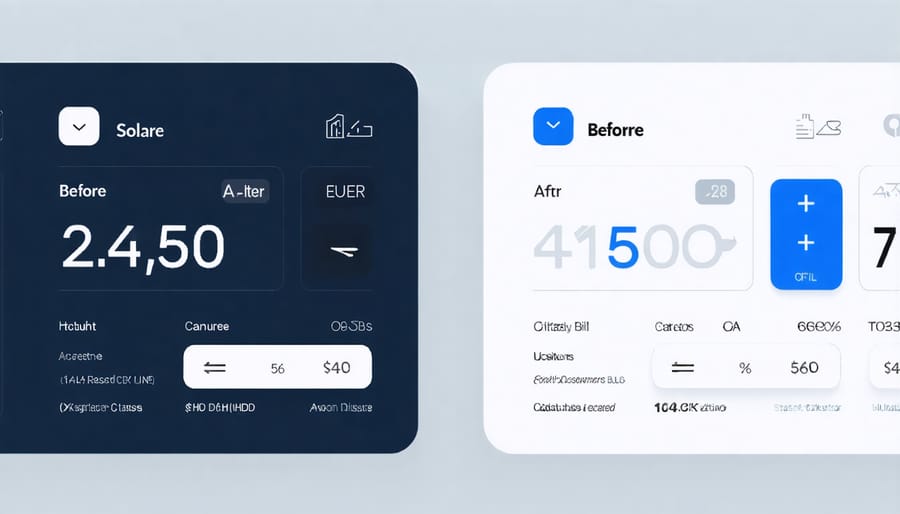
Property Value Impact
Installing solar panels can significantly increase your home’s value, making it a smart long-term investment beyond just energy savings. According to recent studies by Zillow, homes with solar installations sell for approximately 4.1% more than comparable properties without solar systems. For a median-valued home, this translates to an additional $9,274 in resale value.
The value boost is particularly notable in environmentally conscious markets and areas with high electricity costs. Buyers increasingly prioritize energy-efficient homes, recognizing the long-term savings potential and environmental benefits. Modern solar installations are viewed as premium home upgrades, similar to renovated kitchens or finished basements.
Several factors influence how much value solar adds to your property:
– System size and energy production capacity
– Installation quality and equipment brand reputation
– Age and condition of the solar system
– Local electricity rates and solar adoption rates
– Available incentives and net metering policies
It’s worth noting that owned solar systems typically add more value than leased systems, as they transfer fully to the new owner without any continuing payment obligations. When properly maintained, solar panels can continue providing value for 25-30 years, making them an attractive feature for future buyers looking for energy-independent homes.
Getting Started with Solar Financing
Getting started with solar financing doesn’t have to be complicated. By following these straightforward steps, you can make your solar investment journey smooth and successful.
First, assess your home’s solar potential by examining your roof’s condition, orientation, and shading. A south-facing roof with minimal shade typically offers the best solar potential. Next, request quotes from several reputable solar installers to understand the total system cost.
With your estimated costs in hand, explore these primary financing options:
Solar loans are similar to home improvement loans and often come with competitive interest rates. Many local banks and credit unions offer specialized solar loan programs, and some solar installers partner with financing companies to provide convenient options.
Solar leases or Power Purchase Agreements (PPAs) allow you to enjoy solar benefits with little to no upfront cost. Under these arrangements, a company owns and maintains the system while you pay a monthly fee or for the power generated.
Cash purchase, while requiring the largest upfront investment, typically provides the best long-term returns and immediate ownership of your system.
Before finalizing your financing choice, research available incentives:
– Federal Solar Tax Credit (currently 30% of system cost)
– State-specific rebates and incentives
– Local utility company programs
– Property tax exemptions
– Solar Renewable Energy Credits (SRECs)
Once you’ve selected your financing option, carefully review all documentation, including:
– Interest rates and payment terms
– System warranty and maintenance agreements
– Performance guarantees
– Contract duration and cancellation terms
– Any fees or penalties
Finally, work with your chosen installer and financing provider to complete the necessary paperwork and begin your installation. Remember to keep copies of all documents for tax purposes and future reference.
Most homeowners see immediate savings on their energy bills, making solar financing a smart investment in both your home’s value and environmental sustainability.
Making the switch to green energy has never been more accessible or financially advantageous. With numerous financing options available, from solar loans and leases to PACE programs and government incentives, homeowners have multiple paths to embrace sustainable energy solutions while managing their budgets effectively.
Remember that investing in green energy isn’t just about environmental responsibility – it’s a smart financial decision that can significantly reduce your monthly energy bills and increase your property value. The various financing programs we’ve discussed make it possible to start enjoying these benefits with little to no upfront costs.
Take the time to evaluate your specific situation and compare different financing options. Consider factors such as your credit score, home equity, and long-term financial goals. Don’t forget to research local and federal incentives that can substantially reduce your overall investment.
The future of home energy is green, and the time to act is now. With interest rates remaining competitive and technology costs continuing to decrease, there’s never been a better moment to invest in sustainable energy solutions. By taking advantage of available financing options, you can join the growing community of homeowners who are saving money while contributing to a cleaner, more sustainable future.
Start by getting quotes from multiple providers and consulting with financial advisors who specialize in green energy investments. Your path to energy independence and financial savings begins with that first step.


